History teacher finds secret cache of Nazi artifacts hidden behind house wall
The secret cache includes badges adorned with eagles and swastikas, and a portrait of Adolf Hitler.
A local history teacher has discovered a secret cache of Nazi artifacts — including badges adorned with eagles and swastikas, and a portrait of Adolf Hitler — that had been stashed behind a building wall in the city of Hagen in Germany for more than 75 years.
The hoard appears to have been hidden in the last days of the Third Reich, as Allied forces advanced through the surrounding Ruhr region of western Germany and a few weeks before the collapse of the wartime Nazi government in Berlin.
"The objects lay in a narrow shaft between two houses," Andreas Korthals, an archivist at Stadtarchiv Hagen, an agency of the North Rhine-Westphalia state government, told Live Science. "They were probably disposed of in this crevice in April 1945, when American troops marched in."
Related: 30 of the world's most valuable treasures that are still missing
Whoever hid the objects probably did so in a hurry so they would not be arrested for being Nazis, Korthals said.
History teacher Sebastian Yurtseven uncovered the artifacts late last month as he was cleaning up his aunt's house in Hagen after torrential rains and flooding hit the region. Yurtseven told German news outlet Westfalenpost that he removed a piece of plasterboard from a wall that had come loose in the rain and found a hole in the wall behind it.
Inside, he spotted a newspaper from 1945, and then he found several other objects, including Nazi Party medals decorated with swastikas, the portrait of Hitler, a revolver, brass knuckles, gas masks and boxes of documents.
Get the world’s most fascinating discoveries delivered straight to your inbox.
"I got goosebumps," Yurtseven told Westfalenpost. "I didn't think it would turn into such a huge discovery."
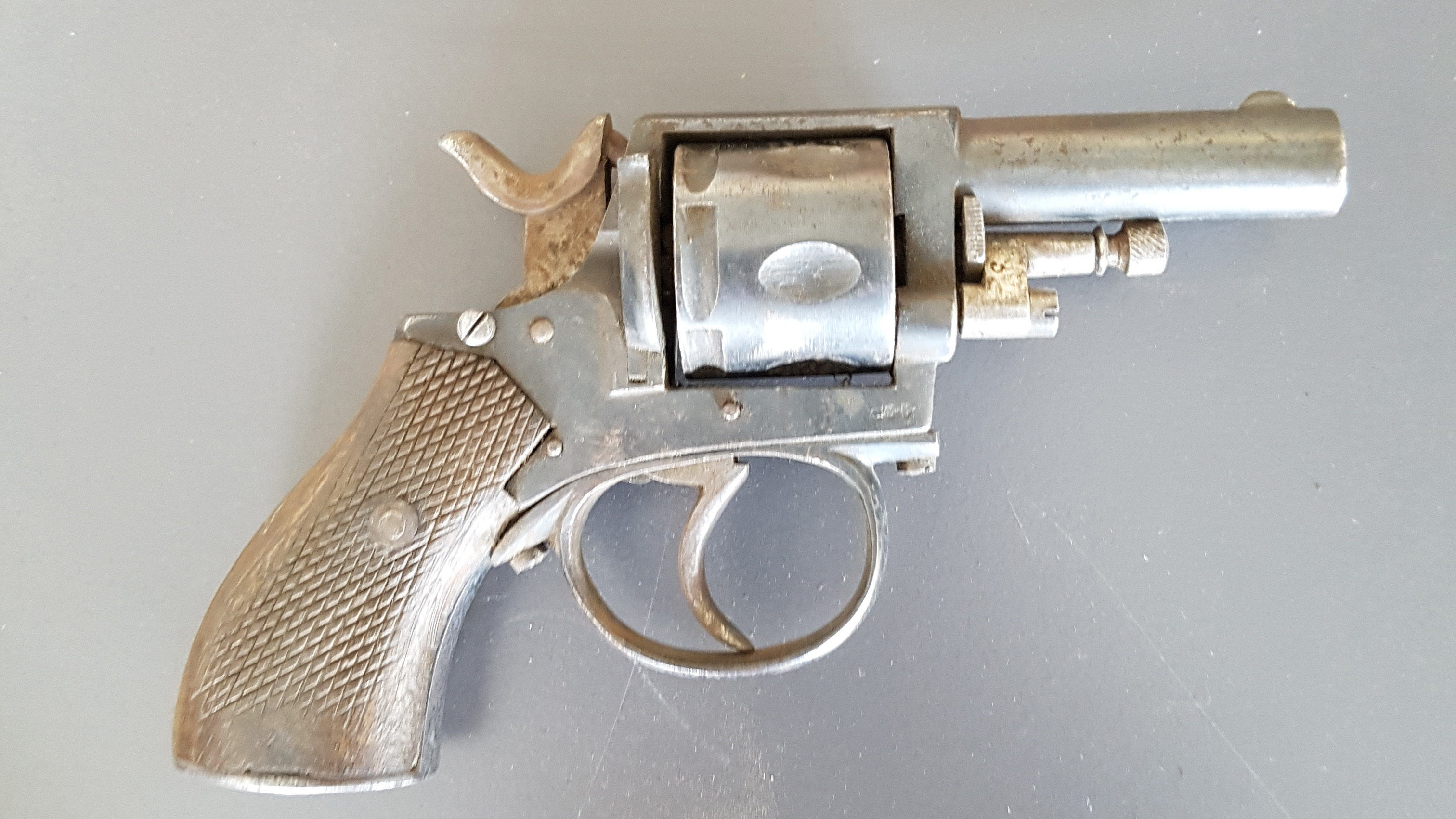

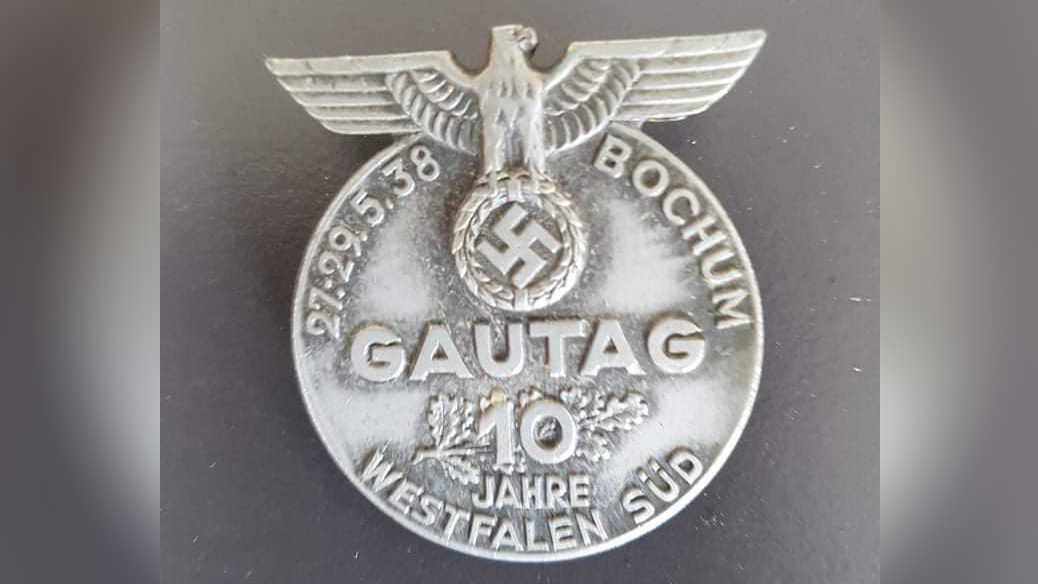
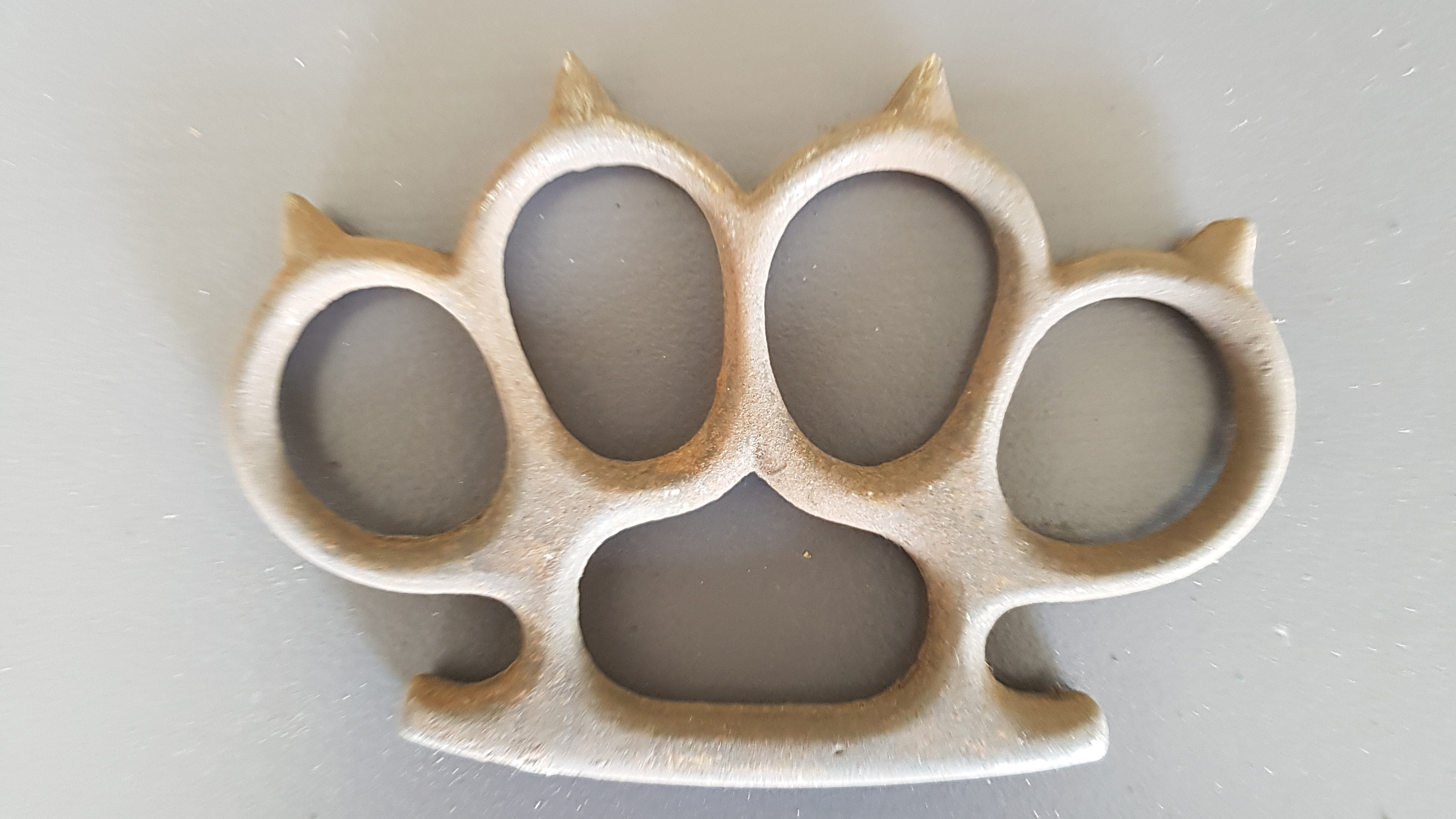

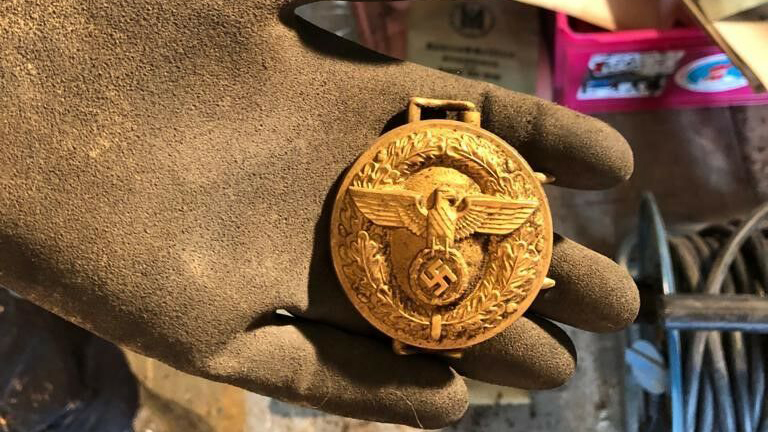
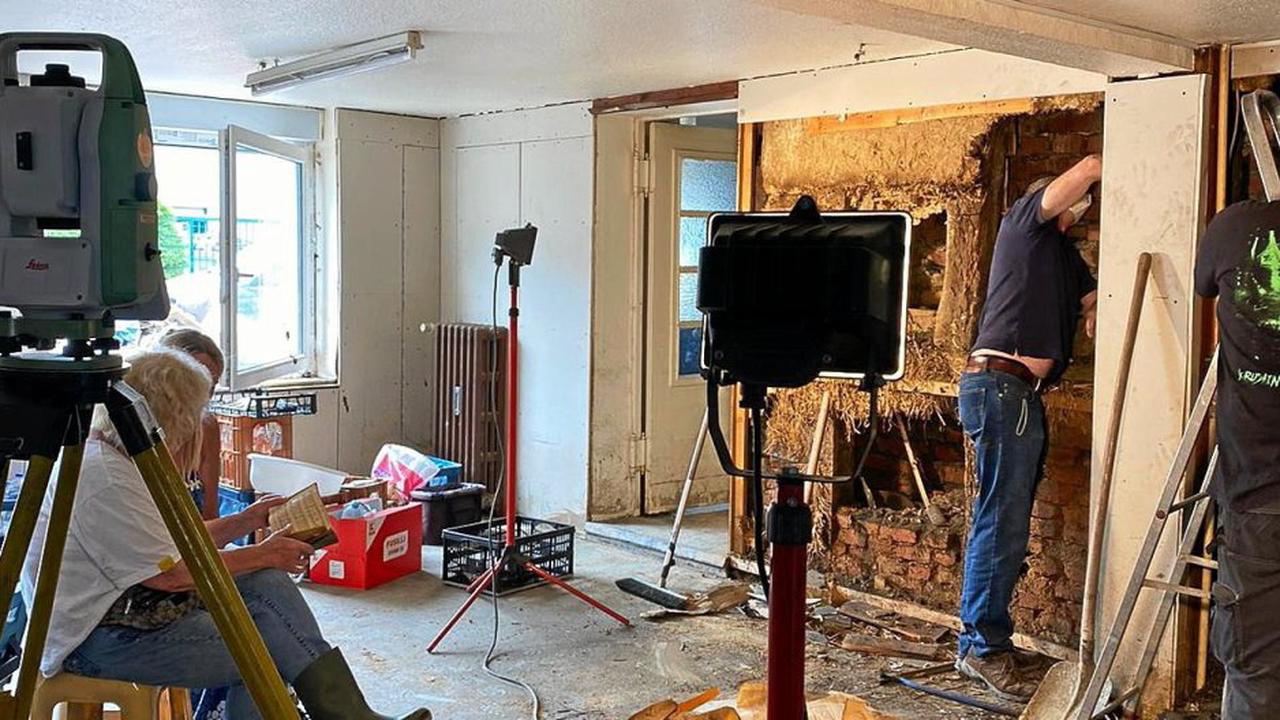
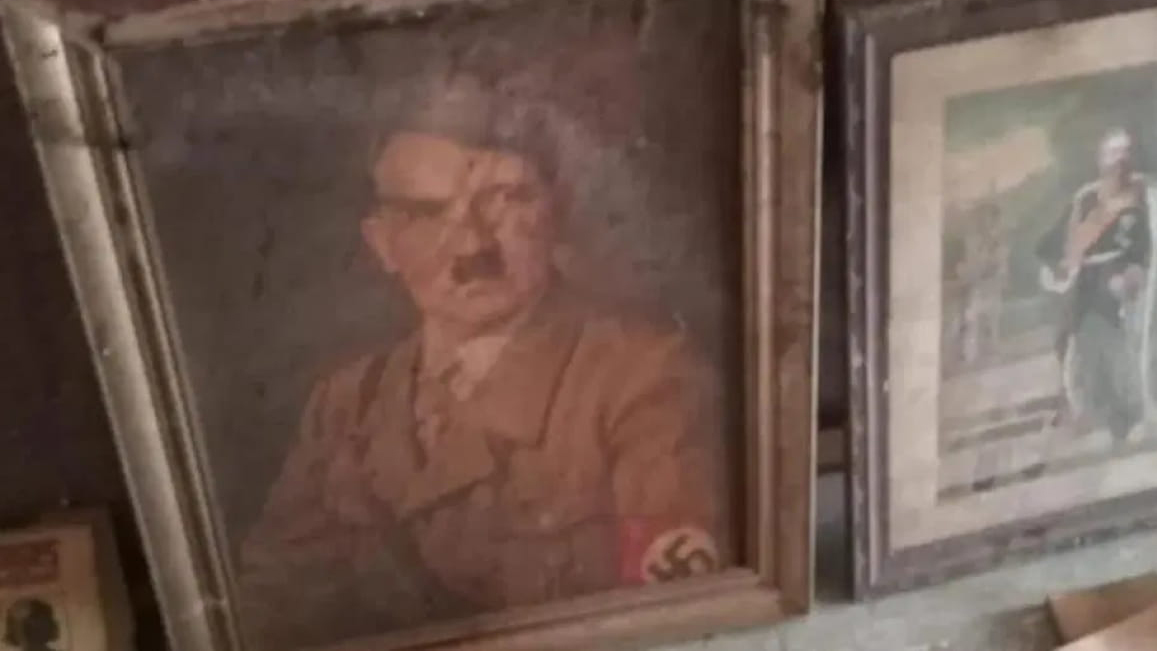

Nazi welfare
Experts from the archives have taken 12 boxes from the site and will examine the Nazi-era artifacts.
Research has found that the house once served as a local office of the Nationalsozialistische Volkswohlfahrt, or NSV, Korthals said. This was a national welfare organization run by the Nazis, whose formal name was the Nationalsozialistische Deutsche Arbeiterpartei, or NSDAP (in English, the National Socialist German Workers' Party).
"This finding is historically and scientifically significant," he said in an email. Little was known about the NSV, Korthals added, although it played an important role in the NSDAP's "national community"' support work during the 1930s and World War II. Nazi Stormtroopers — Sturmabteilung, or SA — likely used the revolver and brass knuckles in street battles against communists and they would have been part of a "memory corner" in the local NSV office that also included the Nazi Party badges, Korthals said.
The painted portrait of Hitler was probably displayed on the wall of the office, and the cache also included NSV literature and several boxes of documents, such as records of pregnant women in the area.
Related: Hitler's rise: How a homeless artist became a murderous tyrant
"Finds of this kind are extremely rare and now offer the city archive the opportunity to find out more about the functioning of an NSV agency," Korthals said.
All of the objects and written materials will be indexed in the archives and then made available for research; some will go on display in a new city museum, he said.
Yurtseven said his family bought the house in the 1960s, and they had no idea that it had once been a local NSV office.
"It is an incredible discovery," Ralf Blank, head of the city archives, told the Westfalenpost. "It sheds a spotlight on the actions and activities of Nazi agencies at the local level."
The NSV was an extremely powerful agency of the Nazi Party within Germany and had about 17 million members in 1943, Blank said. Although the Nazis didn't initially include welfare in their political program, the NSV became a popular success; according the European Holocaust Research Infrastructure (EHRI) its purpose was to supplant organizations such as the Red Cross and church charities and to spread Nazi ideology through welfare work. Its activities included providing food and gas masks, medical treatment for the victims of bombing raids and evacuation of children to rural areas.
The documents from the cache show that the local NSV office was divided into eight cells, Blank told Westfalenpost, and that its alleged boss — the signatory of several of the documents — was employed by a German federal agency after the war and died in the mid-1960s.
Originally published on Live Science.
Tom Metcalfe is a freelance journalist and regular Live Science contributor who is based in London in the United Kingdom. Tom writes mainly about science, space, archaeology, the Earth and the oceans. He has also written for the BBC, NBC News, National Geographic, Scientific American, Air & Space, and many others.


